Meet Scott
This is Scott. Scott and I met in 1994 as first year graduate students at Indiana University and became fast friends. When Scott's advisor -- a great scientist, outstanding teacher, and all-around swell dude -- was not granted tenure at IU, a couple of things happened. First, I became so disillusioned with the tenure process that I more-or-less shunned an academic career path. (And we all know how that worked out.) The other thing that happened is that Scott and the rest of his research group relocated to Clemson University in South Carolina. I helped out by driving Scott's car across the southeast United States while he transported the rest of his belongings in a moving truck. By not wrecking Scott's car during that move, he decided that he might as well keep me as a friend.
He probably rethought that position when I had a conflict with his birthday celebration earlier this year. I promised to make up for it when I had that rarest intersection of opportunities: an open calendar and good weather for a flight to Allentown, PA.
At the time I made the promise, December 10 was not at all what I had in mind. But a beautiful December day to fly out of state? I'll take it.
Freezing Fog
| Date | Aircraft | Route of Flight | Time (hrs) | Total (hrs) |
| 10 Dec 2022 | N21481 | SDC (Sodus, NY) - XLL (Allentown, PA) - SDC | 3.7 | 2566.3 |
Sodus and Allentown were both under clear skies, but that was not the case for much of the route. The clouds were so low that, in places where the terrain managed to poke through the layer, trees were frosted from the freezing fog that surrounded them overnight.
It was 24°F in Sodus when I launched and turned toward the rising sun. Remotely activated engine preheating is a beautiful thing.
"Mountain obscuration" really is a thing, even when there are no actual mountains involved. Higher terrain predictably collects a lot of ground fog this time of year. Though the increasingly wrinkled terrain below was not evident at my altitude, the occurrence of higher elevations around the Finger Lakes coincided with the presence of low clouds.
 |
| A glimpse of Cayuga Lake beneath the clouds. |
As the clouds broke-up, the higher terrain retained a deep, crystalline frost.
In case anyone wondered where all the moisture came from...
Hanging alone in the sky that morning seemed more solitary than usual. I reached Wilkes-Barre, PA before hearing any transmissions from other aircraft. I particularly enjoy being aloft on cold mornings for this reason. Some pilots are put off by the cold, but that has never been the case for me.
Queen City Airport
Queen City, identifier XLL (for "Little Lehigh eXecutive"), sits beneath the Charlie airspace surrounding Lehigh Valley International, the main commercial airport in the region. On my first visit a decade prior, the airport was reportedly on the endangered list. What I found on arrival in 2022 was a very active General Aviation facility. I joined the pattern behind two flight school Archers and taxied in for the FBO. Aircraft taxiing to and from the T-hangars ranged from a simple Cessna 150 to a cabin-class Piper Malibu.
"Got a lot of snow up there?" the affable fellow at the counter asked. I had come in on an IFR flight plan and he must have been tracking me.
"None at all," I responded. "At least not yet anyway."
I listened to a pair of old timers blather on about their political opinions for several tedious minutes before Scott arrived to pick me up.
America on Wheels
Scott had free passes to America on Wheels, a car museum in Allentown. It seemed a great way to do something interesting while still having opportunity to talk and catch up. It was not a massive museum, but it had some interesting, rare, and even unique cars on display.
The first thing that we saw was a Yellow Cab that was featured in the 1946 film, It's a Wonderful Life. I was a little surprised that the museum chose to play the "movie star" card right off the bat. It was a bold lead that made me wonder if there would be anything else of merit further inside. Fortunately, there was.
This 1889 horseless carriage was built by Henry Nadig of Allentown and is purportedly one of the first American cars ever built. While proud of his invention, Nadig never pursued it on quite the scale Henry Ford did.
This 1895 Electrobat IV was one of the first electric cars, devised in partnership by a mechanical engineer and a chemist, Morris and Salom, in Philadelphia, PA.
Note the charger positioned behind the Electrobat that looks like it was stolen from the movie set of Bride of Frankenstein.
The charger used a mercury arc rectifier to convert alternating current to the direct current required by the electric car battery. Note the advertising photo behind it and its not so subtle message: So easy to use that...a woman can do it? Actually, I think the expression on her face is priceless. "Really?" she seems to be asking. "You want me to be in this pandering advertisement?"
A Buffalo-built 1905 Pierce Stanhope.
This 1909 Model R Stanley was steam driven. Valves on the dashboard look like they would have been more at home on a locomotive than an automobile. The steam engine developed a whopping 20 horsepower.
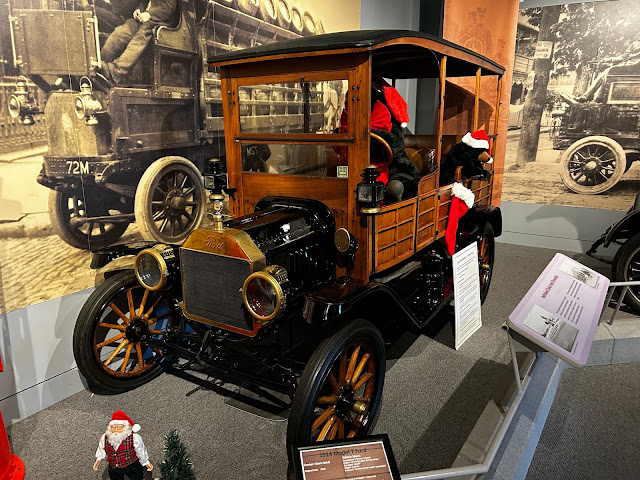 |
| 1914 Ford Model T truck. |
The museum contained many examples of the Ford Model T, considered the first mass-produced automobile. Throughout the production run between 1908 and 1927, they were not only regarded as affordable but highly customizable, manifesting as two seat runabouts, four seat touring cars, and even trucks as shown above.
REO was the second automobile company to reflect the name of founder Ransom Eli Olds. (With Oldsmobile being the first and most obvious.) This 1915 REO was a Roadster, not a Speedwagon. Sadly, the Speedwagon remained elusive. Someone must have "take[en] it on the run."
Until this visit, I did not realize that Mack Truck was based in Allentown. Not surprisingly, there were a few items on display representing the history of that company. Mack also has their own museum in town, but it is currently closed to the public.
Originally intended to become a dump truck working WWI battlefields, this 1918 chassis instead became a fire truck that served Baltimore for a couple of decades.
 |
| "Pew pew." (Scott said this was called a "deck gun".) |
This has to be the doughiest fireman I've ever seen. Time to exercise, Kringle!
This 1922 Detroit Electric car was built in...Detroit. In other obvious news, Thomas Edison owned one. This made me wonder how his good buddy Henry Ford felt about that, but evidently Ford also bought one for his wife, Clara.
 |
| 1927 Mack track. |
Check out that chain drive! That ain't no bicycle chain!
Produced by the Hupp Motor Company of Detroit, this elegant Hupmobile K-231 is one of only six known to exist. It was designed by Raymond Loewy who is famous for designing the Coke bottle, Air Force One's livery, NASA's Apollo and Skylab spacecraft interiors, and several corporate logos including Shell, BP, and TWA.
Continuing the evolution of the Mack truck, this 1933 model is a bit more stylish than the utilitarian designs of the teens and twenties.
Another Hupmobile, this one a 1937 Series 816G Rumble Seat Couple. Rare and completely original, this machine is a beauty. Hupp's vehicle designations are the most inscrutable things this side of American Champion's.
I loved the Art Deco rocket ship hood ornament.
It is said that the Ford Model T was one of the most versatile cars ever built. This one was customized with a small wooden truck bed in back to carry a plumber's tools.
 |
| 1938 Packard Eight Business Coupe. |
This one of a kind 1939 homebuilt Wendling racer featured front wheel drive (by using a Model T chassis turned backward and flipped upside down), a Van Blerk Boat Engine (inscrutibly), and an artfully bent Packard grille. The instrument panel featured two instruments: oil pressure and tachometer, with the tach being the massive gauge front and center.
This 1959 Pontiac was all original and like many cars in the museum, privately owned. When Scott got a little too close, he received a tedious lecture from a docent about the potential of jacket zippers to impart scratches. Overgrown teenager that I am, I waited for the docent to leave, then looked at Scott and said with smirky faux-seriousness, "What's the big deal? It's not as if it's an airplane or anything."
Heck, I was probably the only person in the whole building actually from Pontiac anyway.
Back in the day, Chrysler was actually fancy.
 |
| 1960 Chrysler New Yorker. |
I understand that it was a functional electric car in 1976, but the design aesthetic of the CitiCar is utterly soulless. Nonetheless, it was one of the most successful electric cars in history with 2,600 of these things sold. Growing up near Detroit, I cannot say that I ever saw one.
Also suffering from a dreadful retro-futuristic design aesthetic, this all electric car was built by a New York family from 1981-1984 after paying $17 to Mechanix Illustrated for the plans.
Now that is a hood ornament! I think every car secretly wants to be an airplane.
Scott and I enjoyed the America on Wheels museum. While it's no Henry Ford, it had an interesting collection of relatively rare vehicles on display.
Convair Airport?
At the museum, we learned that the Queen City Airport was originally named Convair Airport and its runways were used for sanctioned drag racing for a few brief years. While the museum emphasized the "drag racing" part of that, what caught my interest was the bit about "Convair".
"Convair? As in the aircraft manufacturer? Consolidated Vultee?" I asked the docent, who shrugged. He was a car guy, not an airplane guy.
But at my mention of Vultee, Scott pointed out that the airport was on Vultee Street.
It turns out that the airport was constructed by Consolidated Vultee/Convair to build the TBY-2 Sea Wolf torpedo bomber during World War II. It was a Vought design considered superior to the ubiquitous Grumman TBF Avenger; however, Vought lacked the capacity to build it. Consolidated Vultee got the contract and secured manufacturing space at a Mack truck plant in Allentown, PA. To test fly and move finished airplanes away from the plant, the company built what became Queen City Airport next to the factory. Despite my fascination with WWII aircraft, I had never heard of the Sea Wolf. That is because it never served in combat. By the time the factory was up to speed, the airport built, and the bugs worked out of the design, the war was ending. 180 were built before the government contract for the Sea Wolf was terminated. If any of those 180 Sea Wolf torpedo bombers survived to the modern era, I have not been able to find any evidence of them.
 |
| Warrior 481 is parked third in line along this old hangar. |
 |
| The FBO and flight school ramp. The flight school appeared to own a number of newer Archers. |
 |
| A view of Allentown on departure. |
Radio Work as a Spectator Sport
I scooted out from under the Charlie airspace to the southwest before picking up my IFR clearance for the flight home from Allentown Approach. Ultimately, Allentown cleared me to 7,000 feet despite the fact that the odd altitude was inappropriate for my direction of flight and above what I filed (6,000 feet). It was Wilkes-Barre that ultimately brought me back down to 6,000, though I was never given a reason for what seemed like an intentional deviation from standard practice.
Cruising home while monitoring the emergency frequency (Guard, 121.5 MHz), I heard, "England is up two one on a penalty kick." If there was a two-way component to this random-seeming World Cup update, I never heard it.
"This is Delta, knock it off." Someone was pretending to be the adult in the room. That rarely went well.
"Oooo, I'm Delta," came a response in the most derpty-doo voice imaginable. Leave it to the Guard Trolls to be as constant as the speed of light.
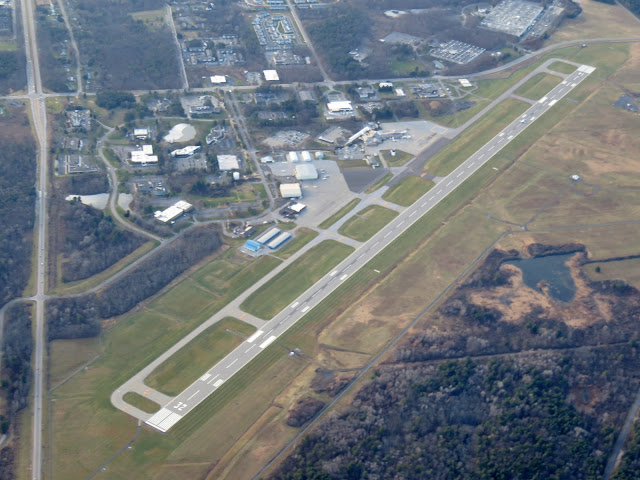 |
| Ithaca-Thompkins Airport, which became my 250th unique airport about two months prior. |
I announced my descent toward Sodus about ten miles southeast of home.
"Hey, Chris," came an answering call. It was Dan in Eight Five X-Ray on his way to Bradford Regional with friends for prime rib. I momentarily thought about changing course and following him. The Runway Bar & Grill is fantastic.
I landed just ahead of one of the club training planes flown by Joe (a student on the verge of earning his rating) and instructor Mike. When he saw me on the ground, Mike laughed and commented that Joe had asked him where I usually fly.
"Everywhere," Mike told him.
Good answer.
Reconnecting with Scott on a beautiful day for flying and learning new things in Allentown's America on Wheels museum made for an excellent December daytrip. We do not always know how things are going to go when we launch into the air, but that day was just about perfect.








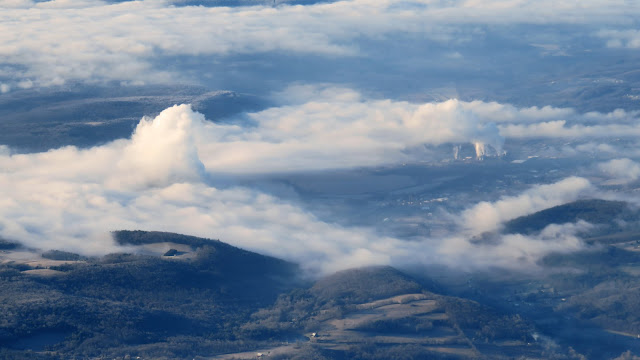

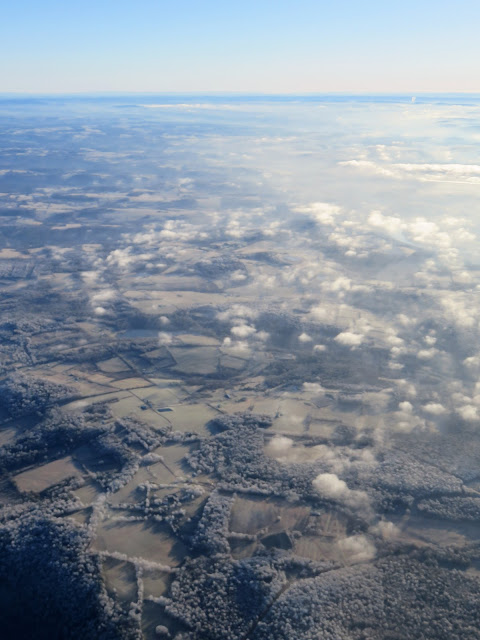

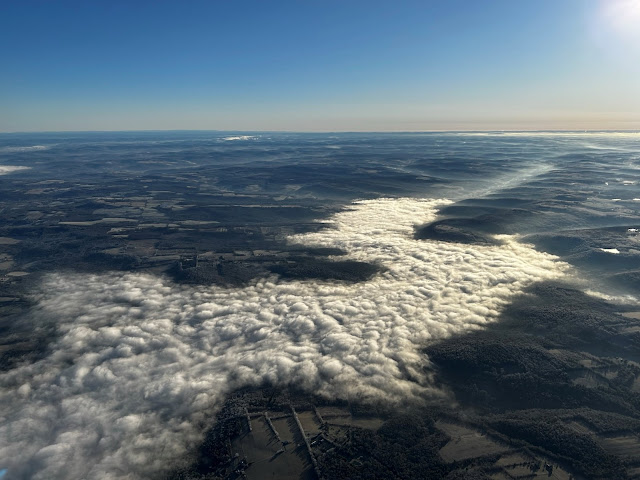

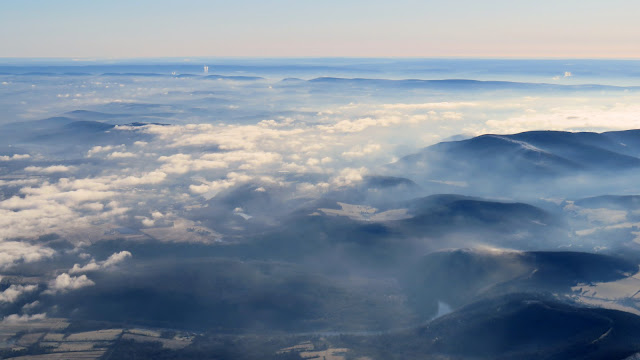
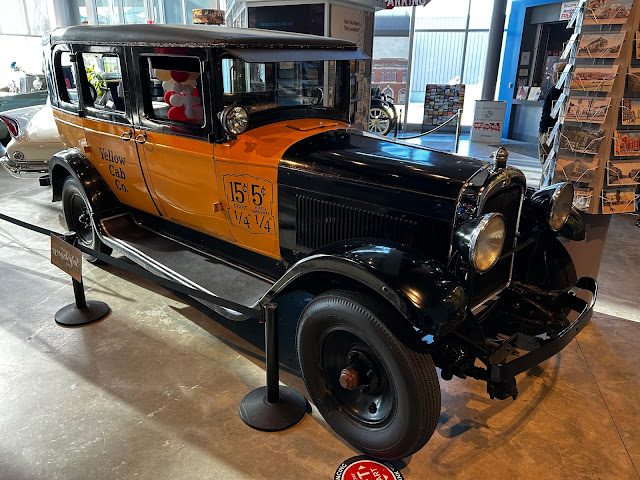





































No comments:
Post a Comment